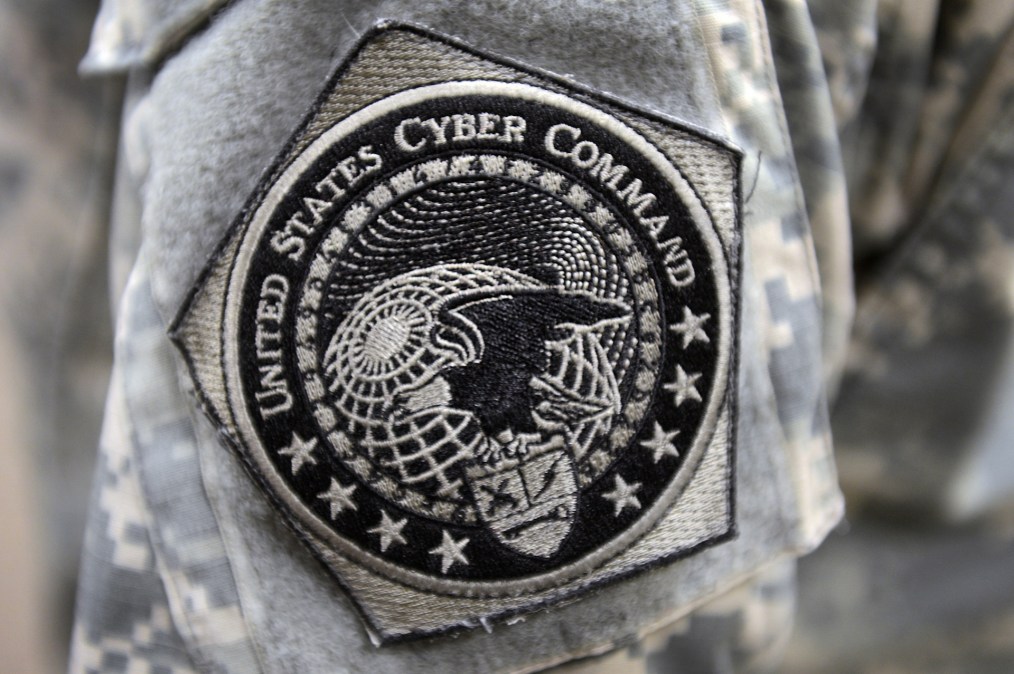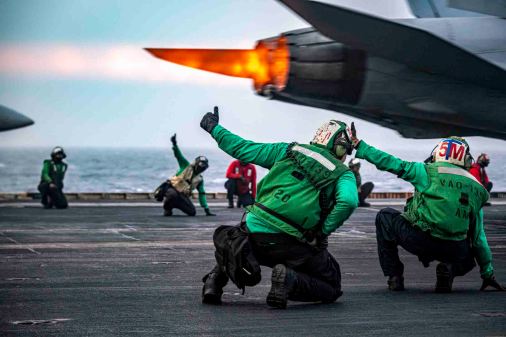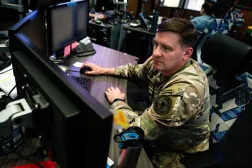Cybercom takes on its newest mission set: partnerships

The new head of U.S. Cyber Command is making cooperation with allies and other partners one of his top three priorities in conjunction with the Department of Defense officially adding that as a new mission set for Cybercom.
Promoting partnerships isn’t a novel idea for the organization. It was a key tenet for Gen. Paul Nakasone, the former chief. But now, his successor has been tasked to move the ball forward.
“I am confident we are successful in our mission each and every day, thanks to our people, our innovation and our partnerships — my top three priorities that ensure we deliver outcomes against national priorities in foreign intelligence and cybersecurity,” Gen. Timothy Haugh told the Senate Armed Services Committee on Wednesday.
The 2023 DOD cyber strategy added a fourth mission of enhancing partnerships to Cybercom’s initial three missions of defending the nation from cyber threats, protecting the department’s networks, and conducting cyber operations for combatant commands to support joint force ops and objectives.
“We have a fourth mission that has now been identified in the DOD cyber strategy: building partnerships with allies and partners. Clearly overlaps with the theme today,” Haugh said at the Cybercom legal conference on Tuesday, adding in congressional testimony this week that such collaboration increases effectiveness.
Haugh framed these relationships — and enabling others — as key to the department’s overall efforts to deter malicious activity. Outside experts and some in Congress have been concerned about a lack of a cyber deterrence strategy. But Haugh believes partnerships are key and tie into one of the main pillars of the National Defense Strategy: “integrated deterrence,” in the parlance of Pentagon leadership.
“I think this is exactly where the department wants us to go. When we think integrated deterrence and we think about it in cyberspace, it’s about how do we come together with a bunch of partners that all can make it more difficult for an adversary to operate and to impose costs as necessary,” Haugh told senators.
At Cybercom’s legal conference, Haugh noted that in the context of integrated deterrence, the DOD is looking at the command to bring cyber capabilities to the rest of its activities. This involves the ability to help others generate options. And for Cybercom, the metric is delivering outcomes for others.
“Those outcomes could be a cyber operation. It could also be a public affairs release that exposes something from our adversary. It could be a defend-forward mission where we send a defensive team to another nation to help them clean out a network and identify adversary activity and expose that activity. It could also be a sanction, it could be a demarche, it could be an exposure by the Department of State’s Global Engagement Center. The outcome is what matters,” Haugh said. “In doing that, we can think about how we campaign very differently. We’re proud of the work that goes on every day with our interagency teammates, with our other combatant command teammates, and also with our foreign partners that are also dealing with the very same issues either within their networks or in requests from other elements of their government for more cyber capability.”
Kinetic and non-kinetic capabilities in multi-domain operations
Partnership also extends to working across other military entities to integrate cyber effects for a true multi-domain capability. More and more now, the battlefield is becoming blended where a single ground or air capability, for example, won’t cut it.
Concepts and capabilities must be integrated across all domains of warfare to drive success. This is especially true against near-peer, nation-state competitors that possess sophisticated traditional military capabilities as well as technological prowess in the cyber and electromagnetic spectrum realms — something the U.S. has not faced in some time.
“As we think about those multi-domain activities, it’s also about realizing that as a Department of Defense, we have incredible capability, incredible experience. But we have not had a crisis against a near peer that could both collect against us at scale and also target us within the cyber domain at scale. What does that mean for us when we start to think about our priorities?” Haugh said at Cybercom’s legal conference. “When you think about what the future holds and we look at what’s happening today in Russia-Ukraine and what it means to not just be able to generate kinetic capability — it’s also about how we operate, how we defend networks to ensure that we have information advantage.”
The DOD continues to take many lessons from the Russia-Ukraine conflict, one being the importance of integrating cyber and kinetic effects together. The term “kinetic effects,” in U.S. military parlance, generally refers to the use of traditional types of weapons such as projectiles.
The 2023 DOD cyber strategy “draws on lessons learned from Russia’s 2022 further invasion of Ukraine, which has prompted a global reconsideration of the role of cyber in conventional conflict. These events reaffirmed that war-time cyberspace operations are best understood as a complement to conventional missions rather than as a decisive standalone capability,” Ashley Manning, acting assistant secretary of defense for cyber policy, wrote in congressional testimony to the House Armed Services Subcommittee on Cyber, Innovative Technologies, and Information Systems this week.
“Russia’s cyber operations in the war in Ukraine are largely consistent with the strategic miscalculations we have observed with Russia’s kinetic forces. The Department does not consider this to be proof of the weakness of Russia’s cyber arsenal or a failure of cyber as a tool in warfare. Rather, we assess that it is a reflection of the challenges of integrating multi-domain operations and Ukraine’s resilience, which has been reinforced by strong support from the international community and private sector partners,” she added.
In this multi-domain military environment, Cybercom will be responsible for helping to set the international stage from a security perspective, Haugh explained.
“How do we ensure that we’re cyber secure so that we understand that the department would be able to operate all the way from our strategic capabilities to be able to move goods around the globe and to be able to ensure that we’re best postured? That takes a number of partnerships,” he said. “That brings with it an implied series of partners that we have to have to be able to be successful in anything that we’re going to do in crisis. Those include our combatant commands, those include the interagency, and they include the foreign partners and allies that we’re going to be operating with.”
In practical terms, this means partnering with geographic combatant commands in proximity to or directly in the fight to ensure they have information advantage. That involves continued tradecraft, thinking about where to place the high-end defensive cyber protection teams, and using all the authorities afforded to Cybercom from the DOD and Congress — be it training, network configuration or operations.
It could also mean determining what partners or allies to work with when asked for help.






